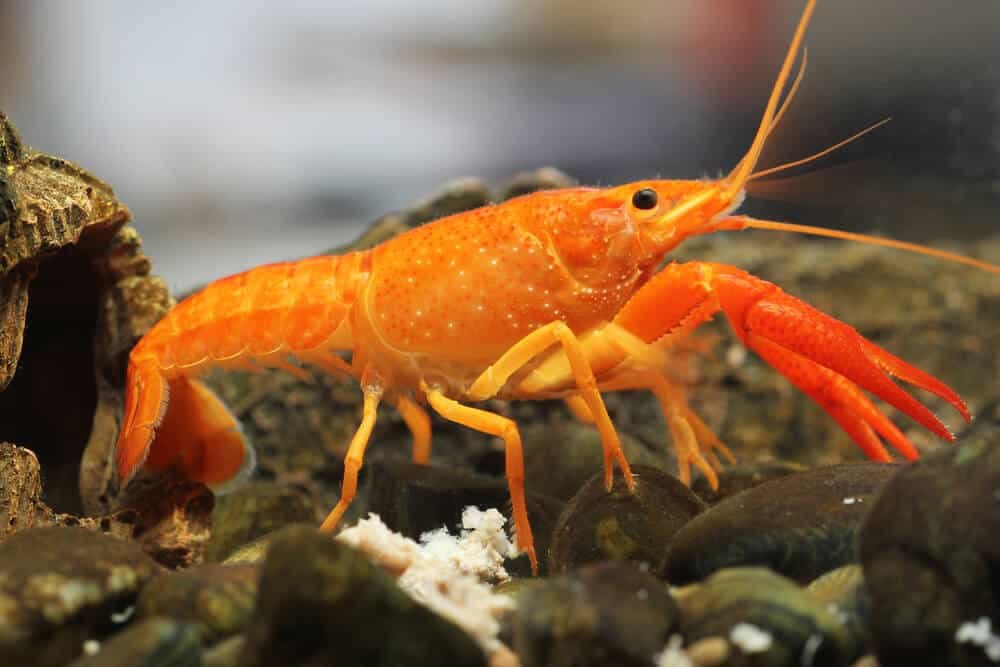What Do Crayfish Eat? Feeding And Diet For Different Species
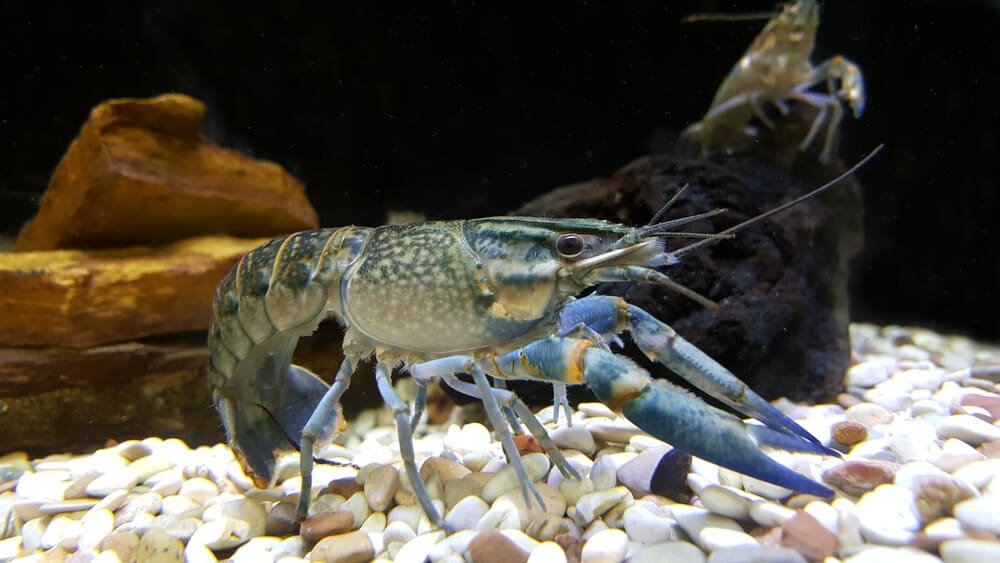
A crayfish, even though there’s a ‘fish’ on its name, is a crustacean. They appear similar to lobsters and shrimps.
They may not be a pet-type of invertebrate, but they serve a great purpose in the aquatic ecosystem. If there are earthworms and roaches on land, they would be the aquatic equivalent, albeit a bit cleaner.
It can be tricky when you’re adding them to your aquarium. That’s why we made this guide so you can learn everything you need to know about crayfish.
Crayfish Overview
Likewise known as crawfish, they are crustaceans under the order of ‘Decapods.’ They look a lot like lobsters, but they live in freshwater rather than in the sea.
There are about 600 species that stem from the 3 Crayfish families, namely ‘Astacoidea,’ ‘Cambaridae,’ and ‘Parastacidae.’
For clarification, the one we’ll be talking about here is not the same species in places like New Zealand, Australia, or South Africa. It’s because the ones in those places are a name for the spiny lobster from the Palinuridae family that lives in saltwater.
So far, crawfish can be found all over the world. They are common in lakes and rivers, mostly in locations with tropical climates.
Although they are abundant there, they can adapt to the climate of their surroundings, which means they can exist in cold regions. Their anatomy, as mentioned, is similar to that of lobsters. They have a body of an invertebrate, several legs, antenna, claws, and swimmerets.
Their colors and shapes can vary, while their size can reach 6.9 inches on average. Nowadays, they are being treated as pets due to being low maintenance.
How Long Do Crayfish Live?
In the wild, these creatures can live up to 20 years. Under aquarium conditions, however, they can only live around 5 to 6 years.
In The Wild
Since they are freshwater creatures, they tend to settle on rivers and streams. In that habitat, they encounter mostly rocky or muddy waterbeds and local vegetation. In comparison, the sea has a wide variety of planktons and smaller creatures to feast on.
The water current of the rivers and streams is the reason why these crustaceans survived.
The movement flushes any pollutants in the water, and this is favorable for crawfish. Why? Simply because they will eat anything, and if they get their hands on contaminated material, their health will be affected.
They may be omnivores, though they are not real scavengers compared to cockroaches.
You may hear that joke wherein shrimps and lobsters are the ‘cockroaches in water.’ While crawfish may be lumped into that category but they are much cleaner.
Here are some of the things they mostly eat in the wild:
Decaying Matter
The wilderness has a lot of decaying matter scattered around. Within the rivers and streams, these can be anything.
They can be decaying plants, dead animals, or even human corpses. With the use of their sharp claws, they will eat anything they can rip off.
Green Matter
Aside from decaying matter, they can feast on living things. Being the omnivores as they are, they too eat vegetation.
If plants are growing at the riverside or beneath, they will eat it. They also feast on algae, and biofilm found attached to washed away twigs and rocks.
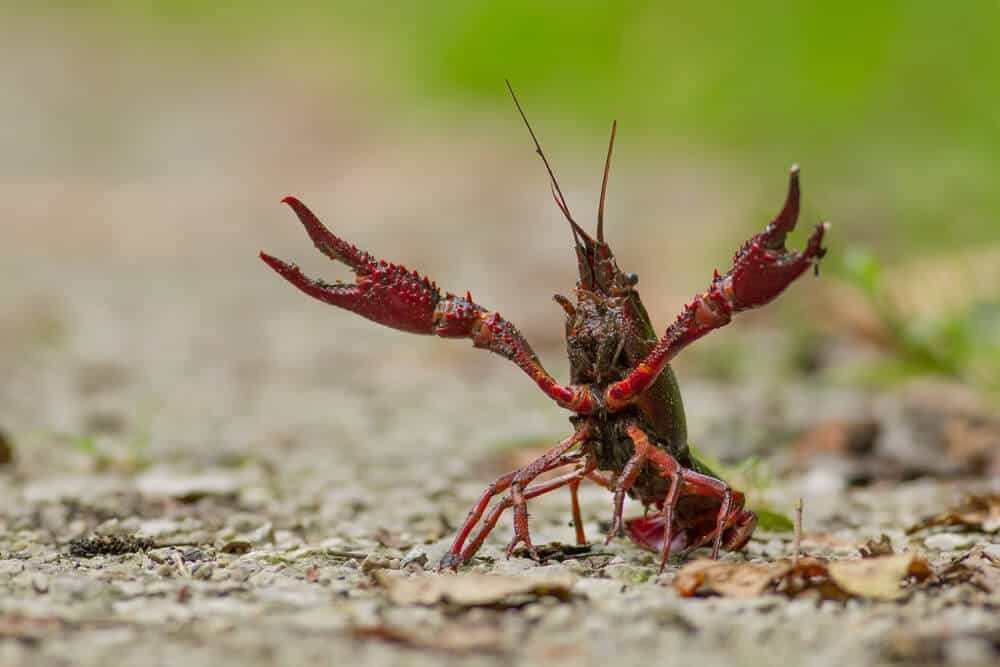
Animal Matter
The other half of being an omnivore is the craving for meat. They will see creatures that are smaller than their size as food. Since they are not fast swimmers, they mainly prey on not-so-moving creatures.
Examples of these are:
- Worms
- Insect larvae
- Tadpoles and small frogs
- Snails
- Dwarf shrimp
- Small fish that are trapped
With the help of their claws, they can reduce anything they get their hands on into food. They usually hunt at nighttime since they’re nocturnal. They dig unto the muddy parts beneath the running water.
From rotting leaves to trapped small fishes, crayfish can eat anything in the wild. However, if food resources are scarce and with the influence of stress, they will become cannibalistic and feed on their species just to survive.
In The Aquarium
Crayfish can be raised within the aquarium. They don’t grow very large and can be fed almost anything. The advantage of having them in an aquarium is that you can select food resources that can provide the most nutrition.
How Do You Keep A Crayfish As A Pet?
Crayfish is less maintenance, so it is excellent as a pet. You just have to be careful since it can eat almost anything.
Aquarium Conditions
Before putting your pet inside the aquarium, make sure that the conditions are similar to their natural freshwater habitat. With a good pump and filtration system, you can very much achieve that.
If you put a crawfish inside a stagnant aquarium, it will become stressful for them, and there might be more deadly scenarios other than cannibalism.
The recommended filtration system is a ‘hang-on-back’ or HOB filter. Although it may be a bit more expensive than a sponge filter, it does deny the crayfish any escape route.
Aside from the water circulation, you need to pay attention also on the substrate. Since a crawfish likes to dig, you can add sand substrate and plenty of rocks.
Rocks can also serve as their hideouts if they want to prey on smaller creatures.
Crayfish are greedy and messy eaters. They hide food, and their leftovers can be scattered on the substrate. So, make sure you select a variety of rocks. Smaller rocks will serve as part of the aquarium flooring, while larger ones are intended for decors or hideouts.
If you incorporate aquatic plants, you might have limited options. Remember that a crawfish is an omnivore, which means it also eats plants.
You can utilize fast-growing plants since they have the highest chances of survival, such as java moss and hornwort. Since they can be relatively small, they can survive in a small aquarium.
A volume of 5 to 10 gallons is enough for housing a single pet. If you are looking to add more, then at least a volume of 20 gallons is required.
Is It Okay To Mix Crayfish And Other Fish Together?
It is possible if you have a large tank that can provide enough ‘private space’ for each creature. But do remember that a crawfish can eat anything, and if a small, expensive, beautiful fish happens to pass by at its hideout, automatically a hungry one will snatch it for dinner.
If there are larger fishes with a carnivorous appetite, it will become their food sooner or later.
The best way to avoid such a difficult scenario is to provide dedicated aquariums: one for your fish and the other one for pet crawfish.
Aquarium Food
Some species live longer but under normal circumstances, with a lifespan of 5 to 6 years. So, as a pet owner, you have to maximize the food resources as much as possible. Feed your crayfish with food that has much nutritional value.
What Do Crayfish Actually Eat?
That depends. You can add a wide variety of foods, and you can even select from your leftovers.
Here are among the things that you can feed to your crayfish inside an aquarium:
Plant-based Foods
Since they are omnivores, you can feed them plant-based foods. Remember that crayfish can eat anything and if you add aquatic plants to its aquarium, expect them to be consumed soon.
If you still like to add plants to the aquarium, select the floating ones since crayfish are not active swimmers and usually settle at the bottom of the tank.
If you have a plant-less aquarium, you can feed your pet with vegetables. They are rich in vitamins, especially those green leafy ones like cabbage and lettuce.
They also like eating fruits but make sure to reduce them to smaller pieces. If you have decaying fruits and vegetables, it will still be acceptable to feed them to your crayfish.
Some species can feast on algae. If there are rock formations inside your aquarium and algae are forming, they can be good as snacks for the crayfish.
If you have plants in general, not just aquatic ones, you can feed them with leaves, stems, or stalk.
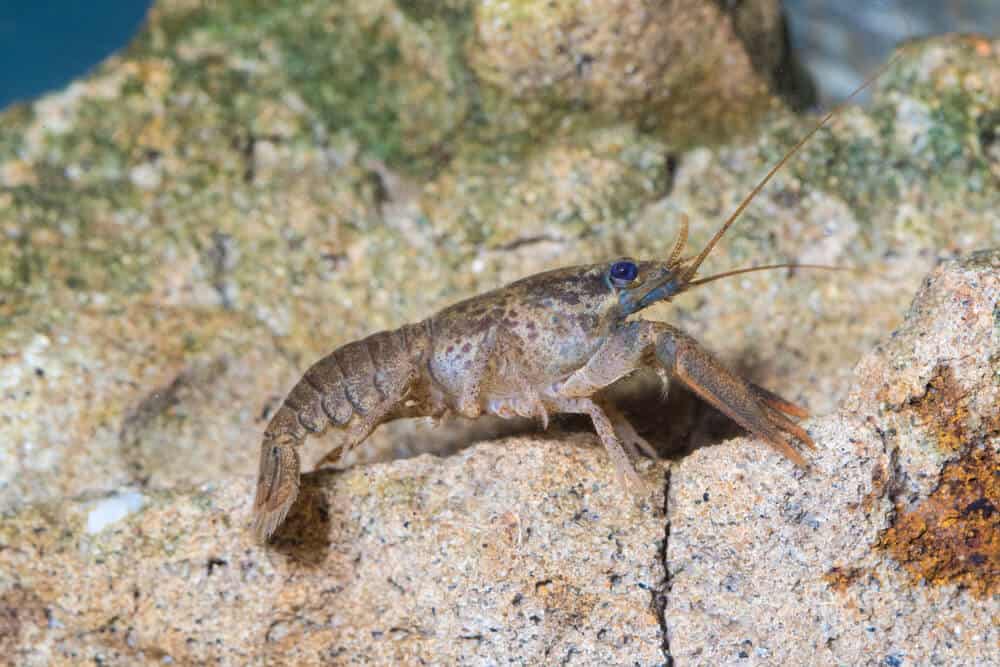
Meat
Meat is often the choice of any animal with a carnivorous palate because it is rich in protein and flavor. Crayfish can feast on meat. The younglings can eat them in bulk amounts. The adult ones need to cut down the serving significantly since they can’t grow any bigger.
So, what meat is good for them? Meat consumed by humans can be applicable. They can be in raw form, processed, cooked, or even leftover.
If you have meat that is recently expired, you can feed it to your crayfish. However, there can be pieces scattered in the tank water and can cause contamination.
Do Crayfish Eat Worms?
If you wanted to feed your pet with live animals, you might do so. Tiny insects can be incredible as long as they can be submerged in the water.
Worms are also considered good sources of protein.
Additionally, they can feed on carcasses, and if you happen to have a dead aquarium fish, you can feed it to them as long as it is smaller.
Processed Feeds
Fish food can also be a good resource for crayfish. If they are great for fish, they will also be at least good for crayfish. Shrimp pellets can also be the preferred food for crayfish.
Most invertebrates undergo a process of ‘shedding’ to free themselves from their exoskeletons and make room for growth.
They also undergo such transition, and after that, the metabolic demand is high. Since they will need calcium, it will be great if you feed them with foods rich in that mineral.
Crayfish Feeding Guidelines
Frequency Of Feeding
How frequently should crayfish be fed? It depends on the size. If a crayfish is still young, you need to feed them every day since they need all the nutrients for growth.
For adult crayfish, only consume for sustenance, and so, you can feed them less frequently.
Since crayfish are nocturnal creatures, they will consume at night. Even if the aquarium is situated indoors and has appropriate lighting, their body clock can tell if it is nighttime.
Take note, they may ignore what you feed to them during the daytime, but it will still be consumed later on at night.
One thing to make sure of is never let a crayfish skip a meal. Once the hunger takes over, it will become uncontrollable and turn into a cannibal. If you cannot avoid such a situation, you can properly deal with it by adding some aquatic plants as its snack reserve.
Amount Of Food
Some might say to feed the crayfish based on the percentage of its weight, but it’s hard to weigh a creature that lives in the water, right?
For a practical reference, you can serve an amount in proportion to its size. The food, in compressed volume, has to be equal to or less than half of the pet’s exterior.
You can also experiment with your pet crawfish’s diet. Try to feed it a certain amount. If you have observed that it will only consume a percentage of it, then you can adjust accordingly.
If you add food at nighttime and it is still uneaten the following day, then your crayfish is not hungry, and therefore, you have to feed it less frequently.
Do not stick to one food type alone. Try to mix it so that the crayfish can receive a variety of nutrients.
If the crayfish don’t eat what you have been feeding it for about 10 to 12 hours, you better remove the food immediately. Uneaten food can pollute the water inside the aquarium, and it can affect your pet’s health.
Don’t pass one full day without removing the leftovers. It is better to underfeed the crayfish rather than to overfeed it.
Remember that the aquatic plants are their reserved food, so don’t worry at all.
Diet Preferences
There are different species of crayfish, and there may be diet preferences. Here are some of the common species and the food they prefer:
1. Procambarus Clarkii
| Traits: |
|---|
| As Adults: Omnivore / Herbivore |
| As Juveniles: Omnivore / Carnivore |
| Not plant safe |
| Very aggressive |
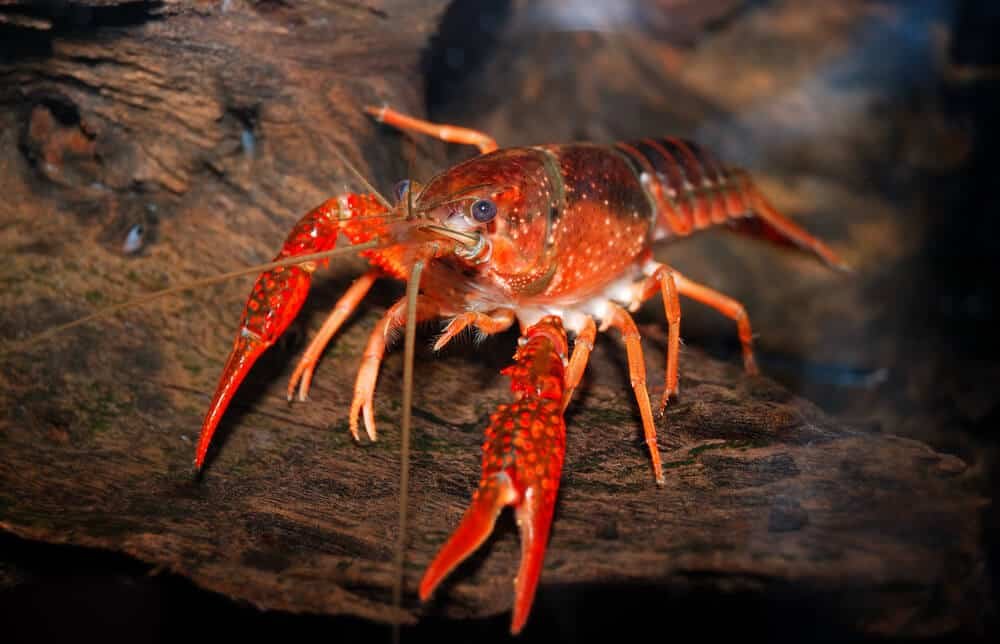
The Procambarus clarkii is generally an omnivore species. In the wild, these crayfish feed on algae, plants, dead and living animals like insects, fingerlings, tadpoles, snails, small fish, etc.
Juvenile Procambarus clarkii tends to be more carnivorous, but over time, at its adult stage, Procambarus clarkii will become more herbivorous.
2. Procambarus Alleni (Blue Crayfish)
| Traits: |
|---|
| As Adults: Omnivore / Herbivore |
| As Juveniles: Omnivore / Carnivore |
| Not plant safe |
| Very aggressive |
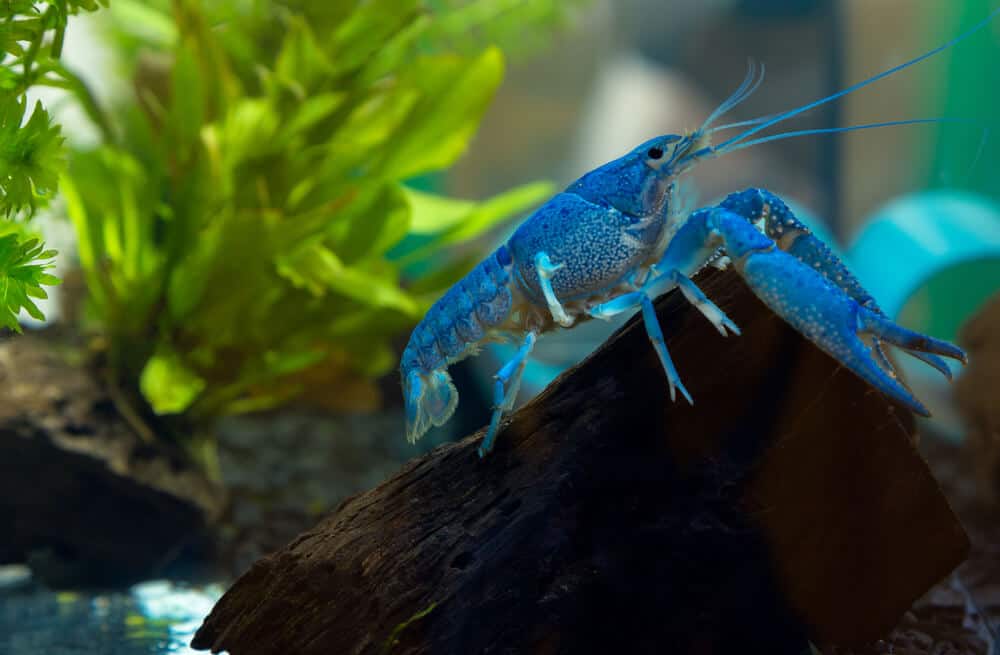
The Procambarus alleni, or also known as blue crayfish, are opportunistic feeders. They will eat anything that their claws can grab on. So, anything that can be digested found in your tank, will all be part of its menu.
3. Cherax Destructor (Yabby)
| Traits: |
|---|
| As Adults: Omnivore |
| As Juveniles: Omnivore / Carnivore |
| Not plant safe |
| Very aggressive |
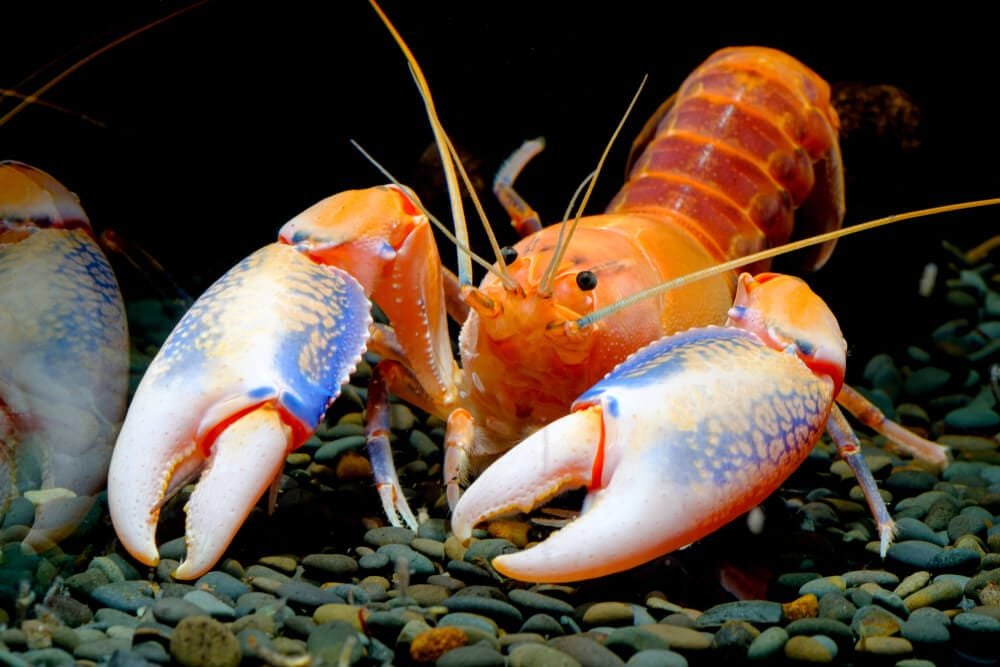
The Cherax destructor is also an opportunistic feeder. They act like scavengers inside the aquarium, wherein they settle at the bottom and wait for anything that submerges. One exceptional quality that the Cherax destructor species have is the capability of switching their food preferences.
For example, protein is being craved, but the resource is limited. This crayfish can switch their diet, focusing on plant-based instead.
Nonetheless, younglings need their protein resource to grow. Research shows that a 35% protein diet is recommended for optimum growth.
4. Procambarus Virginalis (Marble or Self-Cloning Crayfish)
| Traits: |
|---|
| Omnivore |
| Not plant safe |
| Slightly aggressive |
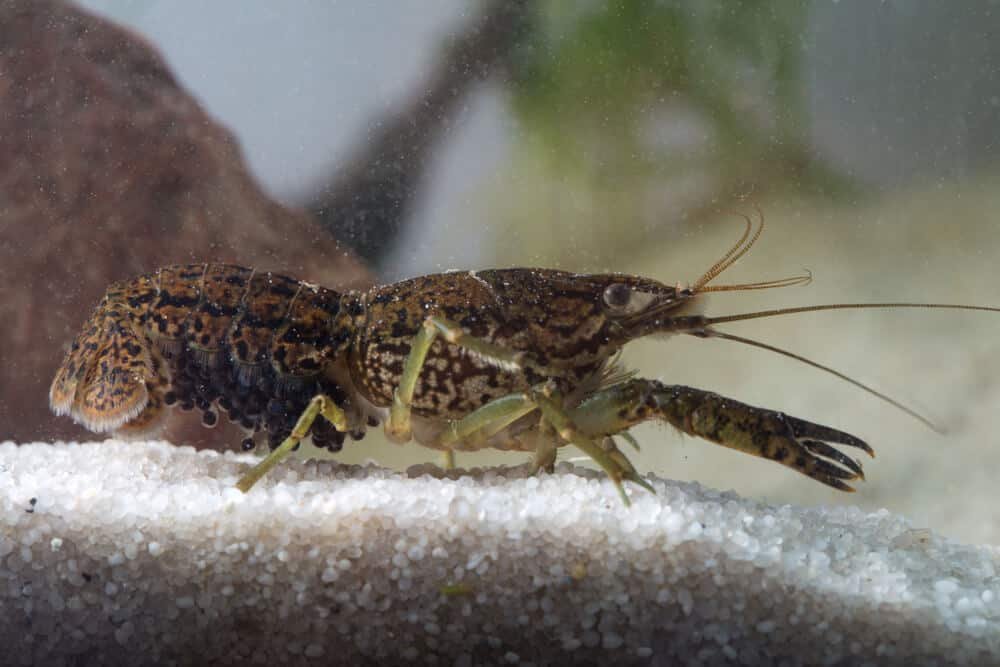
The Procambarus virginalis is a species that is less aggressive than usual. Its diet mainly consists of litter and algae. Even though it feeds on plants, protein-rich foods are highly recommended twice a week at most.
5. Cambarellus Texanus (Brazos Dwarf Crayfish)
| Traits: |
|---|
| Omnivore |
| Possibly plant safe |
| Conditionally peaceful |
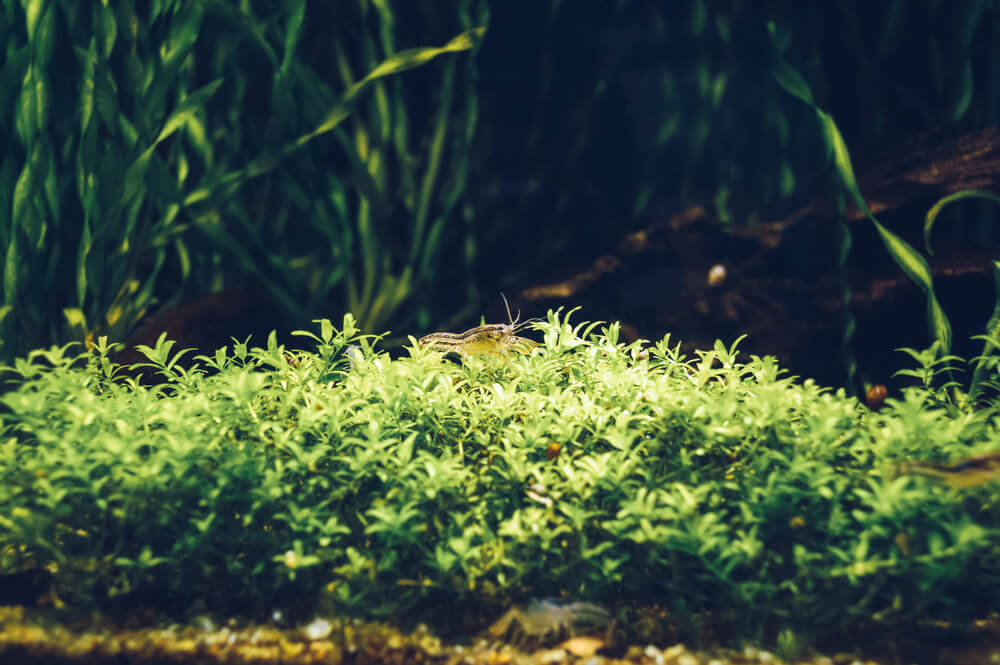
Contrary to the usual temperament of most crayfish species, the Cambarellus texanus is quite the peaceful type. They enjoy consuming organic food.
Some of the foods they like are earthworms, blackworms, crushed snails, and brine shrimp. For a supplementary diet, algae wafers and vegetables are preferred.
6. Cambarellus Patzcuarensis (Dwarf Mexican Crayfish)
| Traits: |
|---|
| Omnivore |
| Possibly plant safe |
| Conditionally peaceful |

The Cambarellus patzcuarensis are omnivores. As much as they enjoy algae wafers, they also crave meaty foods. You can feed them with live animals such as snails, shrimp, and even small fish.
7. Cambarellus Diminutus
| Traits: |
|---|
| Omnivore |
| Plant safe |
| Peaceful |
The Cambarellus Diminutus is the smallest among the crayfish species. It has almost the total opposite of the usual traits of a crayfish. It doesn’t eat aquatic plants and has a peaceful temperament. However, it is an extremely opportunistic eater.
Feeding Caution
As mentioned, it is not advisable to leave leftovers or uneaten food settling inside the aquarium for more than a day. As much as possible, you must keep the water sanitary for the crayfish, and it is better to underfeed them than to overfeed them. In feeding the crayfish, try to cut them into smaller pieces so that they can process the food easily.
If you introduce fishes as their tank mates, make sure they are at least of the same length.
Larger fishes can keep their appetite in check. So, don’t be complacent in placing smaller fishes even though a crawfish is not a strong swimmer and loves to settle at the bottom.
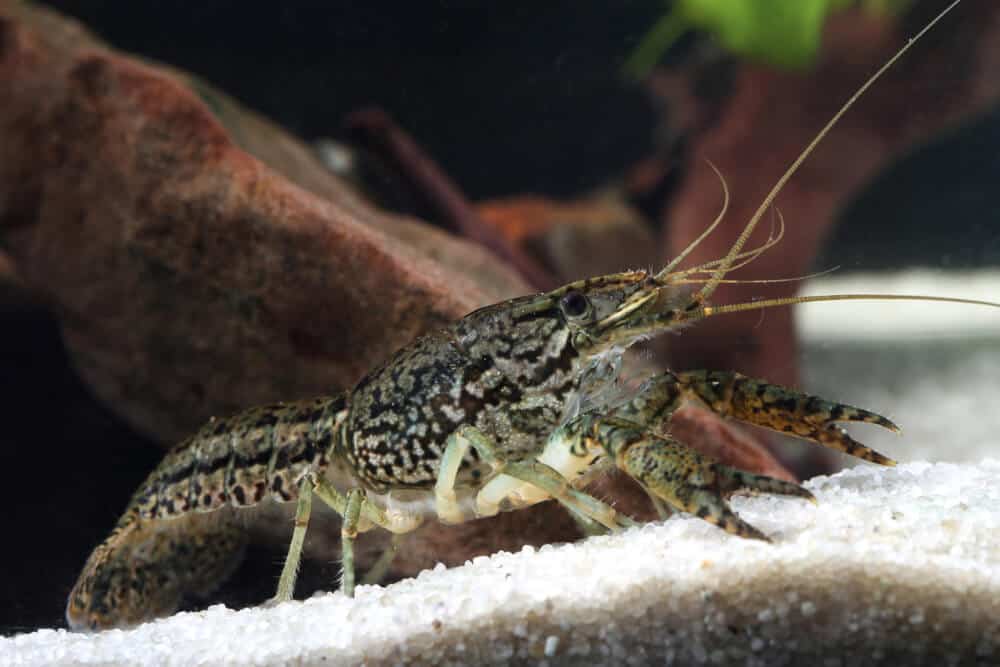
Crayfish Handling
So far, it is evident that you have no problems feeding crayfish. They can eat almost anything that they can grab. However, you must be cautious about their overall health and safety too.
Here are some of the things that can guide you in handling them:
Imitate the crawfish’s natural habitat as much as you can. Do the following:
- The volume of aquarium for a single crawfish is at least 10 gallons
- The ideal temperature range is from 60 to 80 degrees Fahrenheit.
- Place the aquarium near a natural light source like windows or open spaces.
- Add 3 inches of sand or gravel substrate so that crawfish have something to dig on.
- Add decors the provide make-shift hideouts for the crayfish.
- Include aquarium fishes that are compatible with the crayfish.
- Fishes for small crayfish include neon tetras, mollies, small catfish, platies, and swordtails.
- Fishes for big crayfish include Tanganyika cichlid fish, South American cichlid fish, Malawi, barbs, catfish, goldfish, and labyrinth fish.
- Place a mesh screen or clear lid at the top of your aquarium to ensure that your crawfish won’t ever get out.
- Use a ‘hang-on-back’ filtration system and let it operate continuously.
- When you place the crawfish inside the aquarium, put them in a container first and let them immerse in the aquarium for 1 hour. After that, release the crayfish.
- Do not skip a scheduled meal for your crayfish. For unavoidable circumstances, add aquatic plants for them to feed on.
- Regularly clean the crayfish aquarium and change the water at least once a month.
Can Crayfish Survive In Tap Water?
Since they are freshwater crustaceans, they can very much survive within tap water.
Crayfish Breeding
Knowing that a crayfish can live around 5 to 6 years within the aquarium conditions, there is a need to breed more if you wish to continue raising them as pets. However, aquatic invertebrates can be tricky when they are ready for mating.
The easiest way to figure out is to look at the swimmerets. The males have swimmerets extending past their back legs. On the other hand, the females won’t have any beyond the back legs.
How Do Crayfish Reproduce?
Crayfish reproduce in the same manner as all crustaceans. The sperm of a male will fertilize the female.
When mating begins, the males’ sperm will fertilize the eggs of the females. The eggs will then be kept under the females’ tails. At this point, you must isolate the females in another tank. After 4 weeks, the eggs can hatch.
Make sure you return the female to the main aquarium to prevent the younglings from being cannibalized. For the younglings, allot a spacious water tank. You need to provide them their personal space to avoid sibling cannibalism.
Conclusion
Crayfish may be an unusual choice for an aquatic pet, but they are low maintenance. You can feed them with anything you have, so you don’t have to worry about what they eat. There are different species to choose from. Make sure you prioritize their preferred diet.
